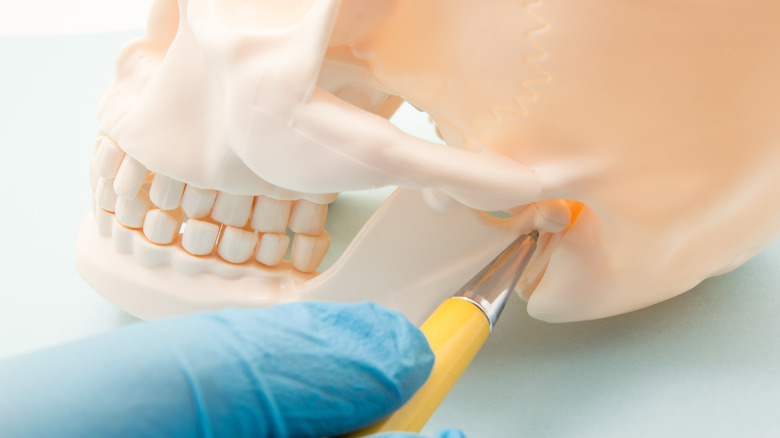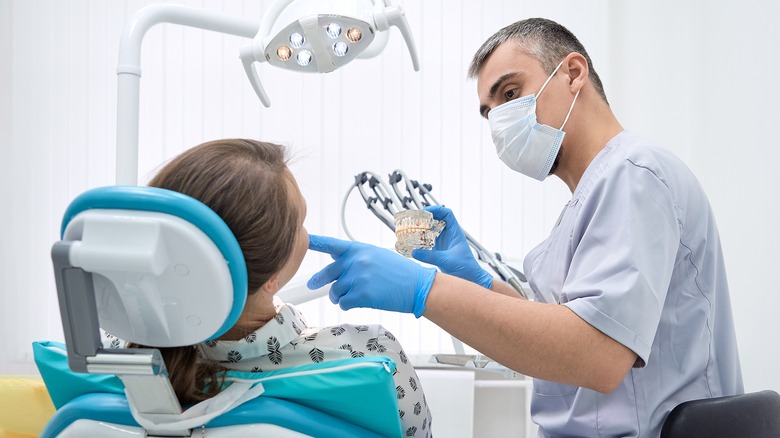What Causes An Uneven Jaw?
While all of us would no doubt love to have a perfectly symmetrical face, the reality is that everyone has at least a small degree of facial asymmetry (via MedicalNewsToday). A 1995 study published in the Proceedings of the Royal Society B: Biological Sciences revealed that people often find symmetrical faces less attractive. That being said, noticeable asymmetry may be a sign of a more serious condition, including a stroke or Bell's Palsy (per MedicalNewsToday).
On average, the most common cause of facial asymmetry is an uneven jaw (via Hidden Smiles Orthodontics). According to the Sydney Centre for TMJ & Sleep Therapy, a jaw that is uneven can impact everything from the way you talk, sleep, and even breathe. You may notice a clicking sound while you're eating, or experience pain in your jaw while doing something as routine as breathing. Knowing what is causing your uneven jaw symptoms will help you target and treat the condition.
The joints in your jaw can work against you
Your jaw is made up of a system of tendons and bones that work together (via Healthline). If anything within that system is off-balance, your jaw can eventually become uneven. This imbalance can be attributed to several factors, ranging from facial trauma, birth defects, and misaligned teeth, to temporomandibular disorder (TMD).
The temporomandibular joints are located on each side of your face, connecting your lower jaw to your skull and helping with everyday tasks like speaking and eating (via Cleveland Clinic). A disorder of the temporomandibular joints can be caused by a number of factors, including stress, grinding of the teeth, and arthritis. If left untreated, TMD can lead to an uneven jaw and leave your face looking crooked, according to MedCenter TMJ. You can also experience pain and inflammation on one side of your face as a result of TMD.
What's the best treatment option?
If you have an uneven jaw, it can be treated with dental appliances or braces (via Healthline). However, extreme cases may require surgical intervention. The procedures to repair an uneven jaw can include a maxillary osteotomy, which brings the upper jaw and teeth forward to align with the lower jaw, or a genioplasty, which restructures your chin bone. You may also need to have your jaw wired for a time to ensure that everything remains properly aligned.
In most cases, however, surgery is a last resort, and non-invasive methods of treatment can deliver positive results (via MedCenter TMJ). In addition to dental appliances, you can also try reducing your stress, muscle conditioning, and modifying your diet as a means of treating temporomandibular joint disorders. If you're having symptoms of an uneven jaw or temporomandibular joint disorder, consult with your doctor or an oral surgeon to figure out exactly what may be causing it.



